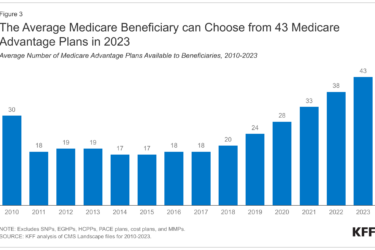The ill-fated CLASS Act is gone.
What’s not gone is the problem of how to provide long-term care to the millions of disabled and/or elderly people who need it – numbers that will only grow as the baby boomers age.
What, if anything, does the Affordable Care Act do to address the problem?
What questions do you have about Health Policy and how to cover it?
 Joanne Kenen (@JoanneKenen) is AHCJ’s health reform topic leader. She is writing blog posts, tip sheets, articles and gathering resources to help our members cover the complex implementation of Health Policy. If you have questions or suggestions for future resources on the topic, please send them to joanne@healthjournalism.org.
Joanne Kenen (@JoanneKenen) is AHCJ’s health reform topic leader. She is writing blog posts, tip sheets, articles and gathering resources to help our members cover the complex implementation of Health Policy. If you have questions or suggestions for future resources on the topic, please send them to joanne@healthjournalism.org.
The Health Policy law did not solve the long-term care problem. Not today’s problem, not the growing problem of the future. Even the most ardent backers of the CLASS Act (Community Living Assistance and Services and Supports), which was part of the health care law, did not see it as a complete answer. CLASS was designed to ameliorate, but not eliminate, long-term care costs, which can easily run $70,000 or more a year. Had CLASS been implemented, it would have given families who chose to participate about $18,000 (the finances were never finalized) a year that could pay a piece of a nursing home bill, or for assistance at home, or to build or a wheelchair ramp or accessible-bathroom etc to enable someone to stay at home.
But CLASS sank in an actuarial/legal/political swamp.
Is there anything else in the ACA to help family caregivers?
The law does have dozens of provisions that – depending on how well they are funded and implemented, how widely they are adopted and, quite frankly, how well some of the new care models turn out to work in the real world – can at least nibble around the edges of the long-term care needs.
New models of care
Some of you have started reporting on hospital readmissions. If we’re going to keep older people out of that revolving hospital door, they are going to need to be taken care of – well – outside the hospital. And that’s where a lot of the new models step in – community health teams to support primary care practices, the independence at home act, medication reconciliation programs, transition teams etc. A part of the legislation called “rebalancing” addresses some of the requirements and obstacles that up until now have led states to put institutional/nursing home care ahead of home and community based services.
The AARP just put out a report on how Health Policy addresses aspects of long-term care and family caregivers. It’s just nine pages, and some of the programs are going into effect this fall, or early next year. There are lots of good local angles for stories there. (The SCAN Foundation is also a good resource on these issues, and I wrote a while back about some of the relevant care models here.) We tend to think of the elderly when we think about long-term care but remember families of the disabled, whether adults or children, and some of people with serious mental disabilities also have these needs.
The report from the AARP Public Policy Institute by Lynn Feinberg and Allison Reamy notes that the Health Policy law explicitly includes both individuals and their caregivers in shared decision making an in quality assessment. What the family thinks and experiences matters; the family is a partner in care. The law includes family caregivers in some of the programs to improve caregiver training. The AARP report notes, in fact, that “The law explicitly mentions the term ‘caregiver’ 46 times and ‘family caregiver’ 11 times.”









